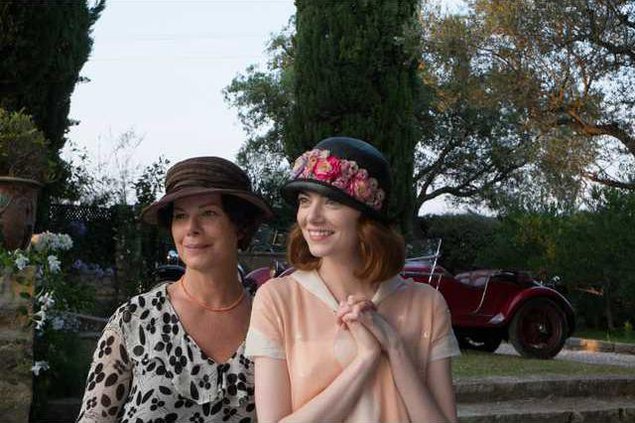“Magic in the Moonlight” is about pride, manipulation and the gulf between your head and your heart. Yet with all that great stuff to work with, Woody Allen’s latest film could have used a little more magic.
The film is a period piece, set in the late ‘20s in the south of France. Stanley (Colin Firth), a famous magician who performs under the stage name Wei Ling Soo, is recruited to debunk a spiritualist named Sophie (Emma Stone) who has been divining her way through Europe to great financial success. Certainly, as a master of illusion, Stanley can pull the rug out from under her scam.
Unfortunately, the veteran discovers two problems. First, Sophie seems to be very good at what she does and may actually be the real thing. Second, Sophie’s youthful charms quickly set to work on Stanley’s heart, making a mess of the prideful magician’s best reason and logic.
On one level, “Magic in the Moonlight” is a romance, and a May-December one at that, given the 28-year age gap between the leads. Stanley and Sophie begin spending lots of time together, which gives Allen ample opportunity to showcase the film’s beautiful period setting. But thematically, “Magic” is trying to mine that territory where men of science butt heads with men of faith.
Confronted with the unexplainable, Stanley must in turn confront his own beliefs. All his life he’s played the cynic, but now he must consider the possibility we all hate: that we might be wrong about something. His world has been turned upside down, but luckily he has his wise Aunt Vanessa (Eileen Atkins) around to guide him through his crisis.
It’s an interesting issue — can the head and the heart ever truly find harmony? — but the twists and turns of the script and the deep flaws of the characters keep any satisfying answers from really taking hold. “Magic” also flirts with that old condescending notion that perhaps a naïve belief in the unknown isn’t such a bad thing if it keeps us happy and the big, bad truth at bay. But instead of resolving any of these threads, a formulaic ending delivers the audience an unfinished work of a final product that feels like the filmmaker finally just decided to cap off in order to meet a deadline.
There’s really no way to look at “Magic” without comparing it to Allen’s other work, and the sad truth is that if you aren’t already a fan, this one isn’t likely to make you a convert. On its own, you could dismiss it as a quaint but flawed film. But compared to recent Allen movies like “Midnight in Paris” and last year’s “Blue Jasmine” (which netted Cate Blanchett a Best Actress Oscar), “Magic” feels like a step down, especially thanks to the flat ending.
The film does have its upside. Atkins is a highlight as Aunt Vanessa, and there are the aforementioned visuals. But unless you have a crush on Emma Stone or Colin Firth, or a completist determination to see Allen’s yearly offering, this one could easily be saved for a rental night in.
“Magic in the Moonlight” is rated PG-13 for a brief suggestive comment, and smoking throughout.
Joshua Terry is a freelance writer and photojournalist who appears weekly on "The KJZZ Movie Show" and also teaches English composition for Salt Lake Community College. More of his work is at woundedmosquito.com.








